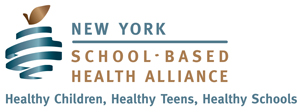Back to school season is here. Parents and children face typical stressors such as getting supplies and arranging schedules as with any other year. In addition, there is the considerable additional stress of navigating health concerns and social pressures around increasing COVID-19 cases in different regions. This adds to parent stress as caregivers navigate what the best decisions are for their children and families. And of course, children and teens are affected as well. Many have been excited to join classmates in person after time spent learning online only to worry about safety concerns – again. Others are anxious about the added in-person social interactions after such a long time in a predictable home environment. And some have already returned to in-person classes but are still caught up in the uncertainty of how classes will continue. Recent research has shown increasing levels of anxiety and depression among children around the world during the pandemic.
We turned to an EMDRIA member known for her experience in working with children in school settings: Anne-Marie Brown, LCSW. Below she provides some reassuring answers and helpful resources regarding the back-to-school season. In addition, EMDRIA members can access discussions and resources about using EMDR with younger populations in the EMDR with Children and Adolescents online community, and EMDR therapists can look through our Education Calendar for workshops on EMDR and children related topics such as the integration of dissociation theory and play therapy with EMDR.
_____________________________________________________________________
Part 1 of an interview with Anne-Marie Brown, LCSW: Back to School
Tell us a bit about you, your experience becoming an EMDR therapist, and your experience using EMDR therapy with children.
I am a Licensed Clinical Social Worker, and I’ve worked in the field for almost 20 years. I currently work with children and families in the child welfare system. I began with adults in substance abuse treatment and found very high rates of trauma. I wanted to make a greater impact on people before they had to struggle through years of unresolved trauma, so I began working with children who had survived sexual abuse. In the beginning, I was not trained in EMDR therapy, so I used other evidence-based modalities but did not feel satisfied with my client’s results. I had an opportunity to become EMDR trained, and I jumped at the chance. It felt like I had finally been given a magic wand to treat trauma, and I immediately noticed my clients making more significant gains and resolving trauma successfully. I incorporated play therapy techniques with EMDR and saw some great success with children as young as three. I’ve even had teen boys in group home settings tell me they wished they knew about EMDR sooner because they felt like it worked for them.
What is the most significant stressor you’ve seen for kids as they prepare to go back to school?
Children are anxious about being in person with people again. Most of my kids remained in virtual classes even after schools started to reopen in South Florida so they have been at home with their families for a year and a half. I’ve seen an increase in fear of socializing, being in groups of people, being outside the safety of their home, and fears of COVID19. These fears are made worse when the child has experienced a COVID19-related death. Many of my kids talk about life pre-COVID19 and how they don’t believe we will ever return to that type of normalcy. It’s important to talk about self-care, positive coping skills, triggers, safe adults, and safe places they can use when needed, as well as safety devices like masks. It’s also essential to help children identify areas within their control. Children are also vulnerable to fears of being out of control, and, for children, so many things are often out of their control. There is often greater fear when they see adults struggle with having no control. So, I try to equip my kids with awareness about what they do have control over. I work with the caregivers to identify their areas of control and encourage caregivers to stay positive around their children.
As we approach the back-to-school season with its COVID ups and downs, is there any wisdom you can share that could help parents, teachers, and/or kids?
Listen to children when they talk about being scared or anxious. Validate their worries and concerns. Don’t just tell them they’ll be okay, or there is nothing to worry about. Answer their questions as best you can or help them find the answers. Please encourage them to play and use art activities to express their fears. Our children have been through so much since the pandemic began. They have had even less control than we adults. At the nonprofit where I work, Center for Child Counseling, we offer many free online workshops for caregivers, and I always refer people to our website for these resources.
August 23, 2021
To continue reading, CLICK HERE.
